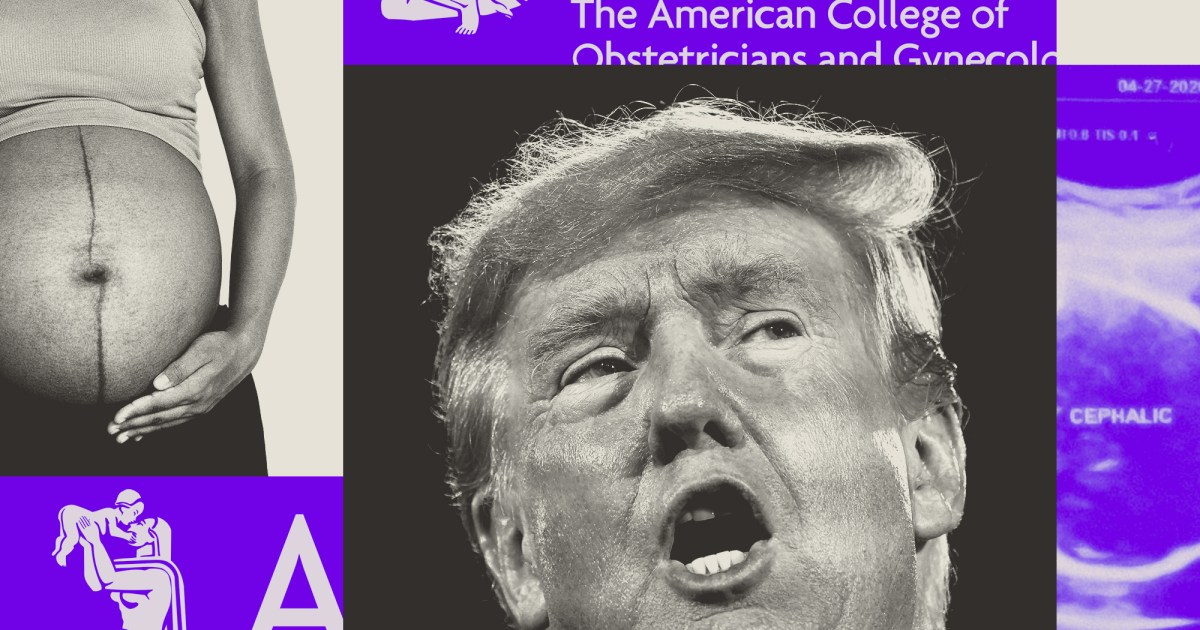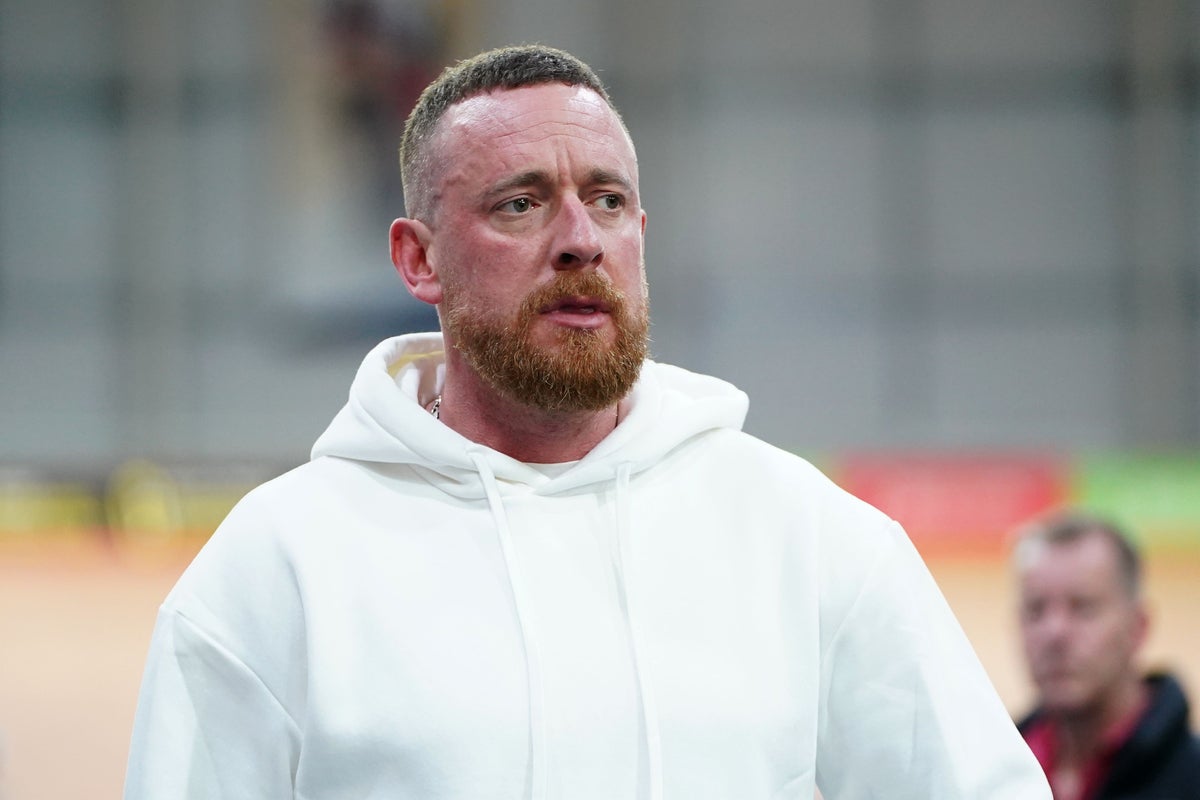Dr. Emily Hawes-Van Pelt, an OB-GYN working in Minneapolis, didn’t consider herself an expert on fighting racism in health care. Then in May 2020, George Floyd was murdered a few blocks from her hospital. “What we knew about the world, many of us”—she looked out at an audience of doctors, most of them Black like her—“became very clear to lots of people. I was angry, I was bitter, I was frustrated, and I thought, What can I do? How can I help? How can I change anything?”
Hawes-Van Pelt’s answer was the same one that other OB-GYNs have come to in recent years as their specialty has faced crisis after crisis: She jumped into advocacy work. She got involved with a coalition of two dozen medical groups pursuing systemic solutions to long-standing racial disparities in US women’s health. She joined Minnesota’s Maternal Mortality Review Committee, helping to analyze cases of people who die in and around childbirth—disproportionately women of color—for lessons to prevent similar deaths.
Five years on, that burst of energy and determination has turned into immense strain, as the women’s health system confronts a barrage of Trump 2.0 attacks against initiatives for patients of color and research more broadly. With the White House and state governments denying the very idea of systemic racism and targeting anything that smacks of diversity, equity, and inclusion, structural change seems further away than ever, and recent gains are at risk of being stalled or erased.
That daunting new reality hung over the recent annual meeting of the 60,000-member American College of Obstetricians and Gynecologists (ACOG), the leading medical organization in the US focusing on women’s reproductive health. In a sign of the times, the ACOG committee Hawes Van-Pelt was part of, formerly called the District DEI Delegation, had a new, less contentious name: the Collective Action Advancing Respect & Equity Delegation.
At the meeting in May, Hawes-Van Pelt addressed a roomful of colleagues about health equity challenges. Even with federal funding slashed for research and large-scale health initiatives, she reminded them, they still have the power to fight bias in meaningful ways: by listening to patients, by being honest and respectful, by showing empathy and grace. Unlike research and medical education, she said, “this doesn’t require funding. This is change that we can make as individuals in our own practices.”
The clouds began gathering during the first Trump administration, as Covid killed Black and brown people at disproportionate rates, laying bare the racism and inequities that permeate American public health.
It was a message heard often at this year’s ACOG conference. In an ordinary year, the meeting attracts thousands of people who come to brush up on topics from menstruation to menopause—and, of course, to schmooze. This year in Minneapolis, many of the conversations were about how providers in one of the most politicized fields in medicine are weathering an unprecedented series of storms.
The clouds began gathering during the first Trump administration, as Covid killed Black and brown people at disproportionate rates, laying bare the racism and inequities that permeate American public health. Just as the pandemic was fading, the Supreme Court overturned Roe v. Wade, ushering in a wave of state laws criminalizing abortion providers and making routine care for pregnant patients infinitely more complicated. States likewise began ramping up attacks on transgender care, which is often provided by OB-GYNs.
Even before Donald Trump was reelected, conservatives had ACOG in their sights. Project 2025—the Heritage Foundation’s 900-page blueprint for a second Trump administration—calls out the organization by name, referring to some of its members as “pro-abortion ideologues” for their work advising the government on what forms of birth control ought to be covered by the Affordable Care Act. At the annual meeting, ACOG’s deputy general counsel, Francisco Negron, pointed to Trump’s anti-DEI executive order that instructs agencies to investigate federal contractors as part of their efforts to stamp out “DEI programs and principles”—and specifically identifies medical associations as potential targets. “Diversity, equity, and inclusion, which we all thought was about fairness, the administration perceives as unlawful discrimination,” Negron told a packed room of physicians during a session titled “Through the Looking Glass.”
The field of obstetrics and gynecology has been grappling for decades with its roots in misogyny and racism, from experiments on enslaved women conducted by J. Marion Sims (the so-called “father of modern gynecology”) in the 1840s, to the forced sterilization of Black women in the mid-1900s, to the huge disparities in maternal mortality for Black women that persist today. Dr. Sharon Malone, a prominent OB-GYN and menopause specialist in Washington, DC, devoted much of her conference keynote speech to the history of medical racism for women, including her own family’s experiences in Jim Crow Alabama. She’d read a new ACOG report on how OB-GYNs can address ethnic disparities in their field, and she commended it, she told hundreds of listeners.
“But,” she added, “how are we going to implement these things in the current environment where you can’t even say the words ‘disparity,’ ‘inequity,’ ‘women,’ ‘race’?”
Health researchers knew Trump’s reelection would not bode well for their work, especially anything involving abortion or other reproductive care. But few were prepared for how quickly and ruthlessly the new Trump administration has moved to demolish much of the federal infrastructure supporting women’s and minority health.
Among the catastrophic staffing cuts at the Department of Health and Human Services, Secretary Robert F. Kennedy Jr. has gutted the Division of Reproductive Health, as well as offices devoted to improving minority health at the Centers for Disease Control and Prevention, the Food and Drug Administration, and the Centers for Medicaid & Medicare Services. Critical public health information, such as recommendations for doctors on how to treat sexually transmitted infections, was scrubbed from government websites until a judge ordered it to be partially restored. The dreaded “DEI” label has been cited to cancel billions in research grants to analyze maternal and infant mortality in the Mississippi Delta; examine the connection between racism and subpar cervical cancer treatment; and scrutinize the connection between psychosocial stress and preeclampsia, a potential deadly form of pregnancy-related hypertension that is more common and severe among Black women. Researchers studying such topics were told their funding was being cut because it “no longer effectuates agency priorities.”
At the ACOG conference, the impact of those and other cuts was evident in the low-grade anxiety that permeated almost every conversation. In the exhibition hall, where purveyors of speculums, IUDs, and abortion pills mingled near recruiters for rural and red-state hospitals, many people I met had lost research funding. Nearly everyone seemed to be tracking the looming cuts to Medicaid, which covers 40 percent of births and makes it possible for many hospitals in rural and low-income communities to stay open. “How are we going to be able to function?” wondered Kristin Swenson, a certified nurse midwife at the University of Washington. “The mood is ‘hold on, button up, batten down.’ Our jobs are going to get harder.”
“How are we going to be able to function? The mood is ‘hold on, button up, batten down.’ Our jobs are going to get harder.”
Several physicians said they were too worried about retaliation by their employers, or the federal government, to talk to me about how their jobs have been affected by the new administration. Multiple doctors shared their frustration at not being permitted to advocate against the Trump cuts. “We need constituents advocating, because researchers are muzzled,” said a Texas OB-GYN, adding that his institution was afraid of being targeted like Harvard or Columbia universities.
Slashing federal anti-hunger programs like food stamps “would be devastating to my patients,” said a maternal-fetal medicine specialist in Cleveland, who treats patients with high-risk pregnancies; poorer overall health tends to make pregnancy more dangerous. She asked to speak anonymously because she has worries of her own: Her research funding has been put on hold, and her lawyers recently advised her not to leave the US to visit her home country of Canada. Another doctor, wearing rainbow glasses, told me that her hospital had learned that women in the community were choosing to give birth at home because they worried they could be arrested by immigration agents at the hospital.
Dr. Caroline Cochrane, an OB-GYN affiliated with Wake Forest University in North Carolina, told me about how, when the Trump cuts started, she was nearly ready to submit an 80-page proposal to the National Institutes of Health to study inequities in menopause care. The study would have used focus groups and surveys to ask Black and Hispanic women—who experience earlier, more severe, and longer-lasting menopause symptoms—about the challenges they encountered getting treatment, with the goal of designing a solution.
But when the White House started gutting research funding, Cochrane realized her proposal contained too many “forbidden words”: “I had a whole section in there on how Black and Hispanic women have historically been excluded from research,” she said wryly. Now, she’s trying to figure out whether she can salvage any part of the proposal. Her job depends on NIH funding a portion of her salary, she told me. “My whole career up until now is in jeopardy of losing its research focus.”
Studies involving the LGBTQ community, which experiences its own pernicious health disparities, are likewise being defunded. Dr. Brent Monseur, a Stanford University OB-GYN, says he’s lost the NIH grant he needs to keep conducting research at his one-of-a-kind academic center, which helps queer people create families using techniques like in vitro fertilization and surrogacy. “LGBTQ family-building is still a very nascent research field,” Monsieur told me. “There are still many things we don’t know, even very basic epidemiology, like who is using these services? How are they paying for these services? What are their clinical outcomes? What are the best treatment plans for specific populations?”
With the Trump cuts, “there’s going to be a pause on all of that research generationally,” Monseur said, forcing him to choose between researching a less politicized topic or leaving academia to work at a private fertility clinic. Not that such work doesn’t carry its own risks in the current tumultuous environment: The weekend of the ACOG conference, a car bomber attacked a fertility clinic serving LGBTQ families in Palm Springs, California, injuring four people and killing himself.
An issue of particular concern to many of the people at the ACOG conference was maternal mortality. Among high-income countries, the United States has by far the highest rate of maternal deaths, the vast majority of which are considered preventable. Black women are three times more likely to die from pregnancy-related causes than white women.
During his first term in 2018, spurred by major journalistic investigations about maternal mortality and years of ACOG lobbying, Trump signed the Preventing Maternal Deaths Act, routing funding through the CDC to state maternal mortality review committees like the one Hawes-Van Pelt joined in Minnesota. Those committees, dubbed MMRCs, identify and analyze causes of deaths among pregnant people and new mothers, then enter the information into a CDC-hosted database, allowing researchers to look for trends and design interventions. (Since 2020, the list of potential contributing factors to be analyzed has included discrimination, interpersonal racism, and structural racism.)
At a meeting on maternal mortality prevention at the ACOG conference, doctors worried aloud about the CDC withdrawing from this work. “Preelection, it was easier to get in touch with CDC and have them meet with us,” the leader of a maternal mortality working group reported. Others raised concerns about the national database—could ACOG take it over if the CDC stopped funding it? “That’s a really complicated question,” an ACOG official responded. “I am actually hoping that it doesn’t come down to that, quite frankly.”
MMRCs are in a politically delicate position. As Anna Claire Vollers has reported at Stateline, Idaho disbanded its committee and Arkansas created a new one after MMRCs in both states recommended extending Medicaid coverage to new mothers for a full year after giving birth—a reflection of data showing that most maternal deaths happen in the postpartum period. In November, Georgia dismissed all 32 members of its MMRC after ProPublica identified two women who had died as a result of the state’s six-week abortion ban using confidential MMRC documents. In Texas, officials appointed a leading anti-abortion activist to its MMRC and ordered the committee not to review maternal deaths for a two-year period following implementation of the state’s near-total abortion ban in 2022.
I reached out to ACOG for background information about the organization’s work on racial health disparities and received a two-page statement by its new president, Dr. Steven Fleischman, who practices in New Haven, Connecticut, and teaches at the Yale School of Medicine. ACOG has been working with the federal government since the 1980s on efforts to reduce maternal mortality, he said. Over the last several years, the medical association has created a number of initiatives designed to reduce racial bias throughout women’s health, from new clinical guidelines to medical training. Much of that work is now “in jeopardy,” he acknowledges: “We are concerned that the sweeping policy changes and spending cuts coming out of the administration will only cause us to backslide on all the progress made.”
“We are concerned that the sweeping policy changes and spending cuts coming out of the administration will only cause us to backslide on all the progress made.”
MMRCs and the national database are among the programs at risk under Trump, Fleischman said. “Realizing that these vital programs could lose funding or be eliminated entirely is deeply concerning and will hamper our ability as a country to track critical maternal health outcomes data and end racial health disparities.” Also vulnerable is a program, the Alliance for Innovation on Maternal Health, that provides training and assistance to hospital systems to improve responses to life-threatening emergencies and prevent maternal deaths. “HHS contracts have been integral to ACOG advancing this work across the country, and we are worried that reduced resources would stymie our efforts at these local levels,” Fleishman said.
Malone, in her keynote speech at the ACOG conference, told the story of her mother giving birth to eight children starting in the 1930s. The treatment her mother received in hospital maternity wards in Mobile, Alabama, was so unpleasant that after the first two babies, she opted to deliver at home. “I don’t think that she had an experience at either of those places that was really something that made her feel cared for or seen,” Malone said.
Back then, around 1 in 100 American women died in or around childbirth—a much higher maternal mortality rate than today (about 19 deaths per 100,000 live births in 2024). But even as the number of deaths was falling, the disparity in death rates between Black and white mothers has only widened. Malone urged the audience to keep fighting for health equity, despite the challenges of the current political environment. “There are things that we control,” she implored. “We have to address how we as physicians deal with patients—what are our implicit biases about why should one person have something and someone else should not?”
“We do not have an engaged federal partner, so we’re going to have to do it on our own,” she added. Instead of looking to Washington for help, “we go to states, we go to legislators, we go to our local health departments, public-private partnerships, all of that.” The answer, Malone said, “is not to do nothing. We can’t afford to do nothing.”















